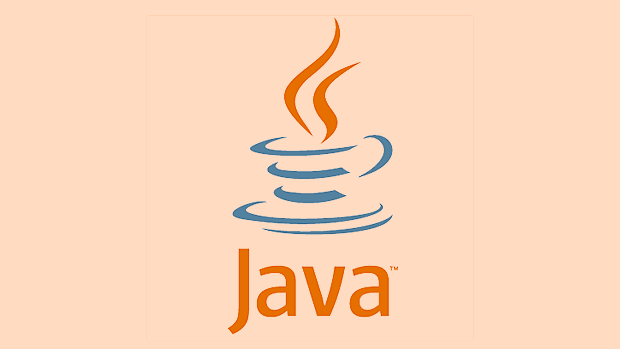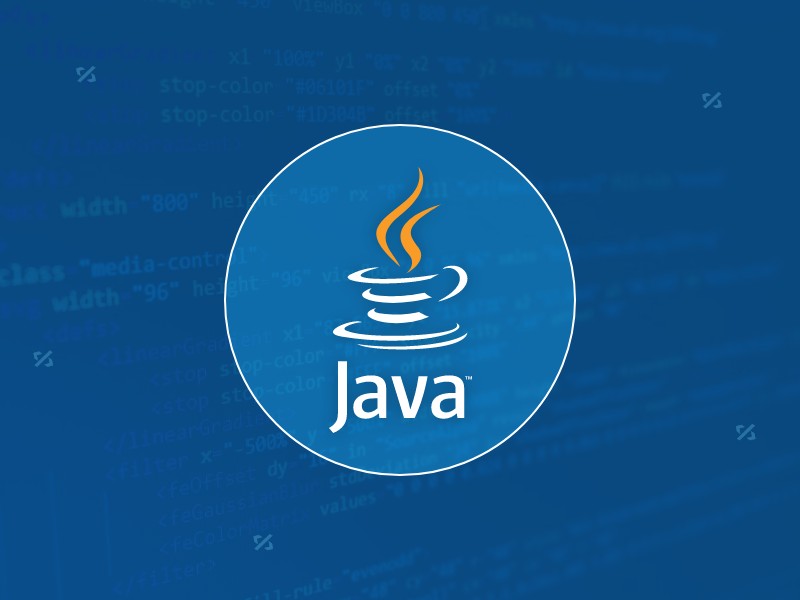Exploring Concurrent Collections in Java util.concurrent
Jul 10, 2025 am 11:36 AMIn a multithreaded environment, using concurrent collections in the java.util.concurrent package can improve efficiency and security. 1. ConcurrentHashMap is suitable for high-concurrent read and write scenarios, and uses segmented locking or CAS mechanisms to improve performance; 2. CopyOnWriteArrayList is suitable for List operations with more read and less read, such as event listener list; 3. BlockingQueue supports blocking operations and is often used in producer-consumer models; 4. Others such as ConcurrentSkipListMap, LinkedTransferQueue, etc. are also suitable for specific concurrent scenarios. When choosing, trade-offs should be made based on factors such as read and write frequency, consistency requirements, etc.

Java's java.util.concurrent package provides many practical collection classes for concurrent programming. These classes are more efficient and safer than traditional synchronous collections in a multi-threaded environment. If you are writing a multi-threaded program and need multiple threads to operate the collection at the same time, directly using a normal HashMap or ArrayList may cause data inconsistency or performance bottlenecks. At this time, the concurrent collection provided by java.util.concurrent can come in handy.

Here are some of the most commonly used concurrent collection types and scenarios where they apply.

ConcurrentHashMap: Thread-safe and efficient Map
In a multi-threaded environment, if you need a Map that can be read and written concurrently by multiple threads, ConcurrentHashMap is the first choice. It does not lock the entire Map like Collections.synchronizedMap() , but uses segmented locks (JDK 1.7) or CAS synchronized (JDK 1.8) to improve concurrency performance.
Applicable scenarios:

- Multiple threads read frequently and occasionally write
- Cache systems, counters, etc. where shared state is needed
Common methods:
-
putIfAbsent(key, value): Insert only if the key does not exist -
computeIfPresent(key, remappingFunction): recalculate the value if the key exists -
forEach(BiConsumer): Concurrently and safely traverse the Map
For example, you want to count the number of visits per user:
ConcurrentHashMap<String, Integer> counts = new ConcurrentHashMap<>();
counts.computeIfPresent("user1", (k, v) -> v 1);
counts.putIfAbsent("user1", 1);CopyOnWriteArrayList: Applicable to List with more reads and fewer reads
CopyOnWriteArrayList is a thread-safe List implementation. Its characteristic is that a new array copy is created every time it is modified, so read operations do not require locking at all. This makes it very suitable for scenarios where more reads, less writes.
Applicable scenarios:
- List of listeners (such as event listening)
- Cache list for configuration information
- Data structures that are not frequently updated but read frequently
Note:
- Write operations are expensive, especially when the list is large
- The iterator does not throw
ConcurrentModificationException - Real-time consistency is not guaranteed (read may see old data)
For example, when registering an event listener:
CopyOnWriteArrayList<EventListener> listeners = new CopyOnWriteArrayList<>(); listeners.add(myListener);
This way, even if multiple threads are adding listeners, it will not cause concurrent exceptions.
BlockingQueue: for producer-consumer model
BlockingQueue is a queue interface that supports blocking operations, which is often used to implement the producer-consumer model. When the queue is full, the producer thread will be blocked; when the queue is empty, the consumer thread will be blocked.
Common implementations are:
-
ArrayBlockingQueue: Bounded queue, based on array -
LinkedBlockingQueue: can set capacity, default unbounded -
SynchronousQueue: No elements are stored, producers must wait for the consumer to take them away
Example of usage:
BlockingQueue<String> queue = new ArrayBlockingQueue<>(10);
// Producer thread new Thread(() -> {
try {
queue.put("item");
} catch (InterruptedException e) {}
}).start();
// Consumer thread new Thread(() -> {
try {
String item = queue.take();
} catch (InterruptedException e) {}
}).start();This mechanism is very suitable for scenarios such as task scheduling and message queueing.
Other useful concurrent collections
In addition to the several main classes mentioned above, java.util.concurrent also provides some other tool classes to assist concurrent operations:
- ConcurrentSkipListMap / ConcurrentSkipListSet : Ordered concurrent collection, supporting sorting operations under high concurrency
- LinkedTransferQueue : Powerful unbounded queue, supporting "transfer" operation (transfer)
- Concurrent implementation of Deque interface (such as LinkedBlockingDeque) : used for dual-ended queue operations
In general, the concurrent collections provided by Java can already meet the needs of most multithreaded environments. Choosing the right collection type can not only improve performance, but also reduce the occurrence of concurrent errors. When using it, remember to weigh the reading and writing frequency, whether order is required, and whether strong consistency is required according to the specific business scenario.
Basically that's it.
The above is the detailed content of Exploring Concurrent Collections in Java util.concurrent. For more information, please follow other related articles on the PHP Chinese website!

Hot AI Tools

Undress AI Tool
Undress images for free

Undresser.AI Undress
AI-powered app for creating realistic nude photos

AI Clothes Remover
Online AI tool for removing clothes from photos.

Clothoff.io
AI clothes remover

Video Face Swap
Swap faces in any video effortlessly with our completely free AI face swap tool!

Hot Article

Hot Tools

Notepad++7.3.1
Easy-to-use and free code editor

SublimeText3 Chinese version
Chinese version, very easy to use

Zend Studio 13.0.1
Powerful PHP integrated development environment

Dreamweaver CS6
Visual web development tools

SublimeText3 Mac version
God-level code editing software (SublimeText3)

Hot Topics
 Difference between HashMap and Hashtable?
Jun 24, 2025 pm 09:41 PM
Difference between HashMap and Hashtable?
Jun 24, 2025 pm 09:41 PM
The difference between HashMap and Hashtable is mainly reflected in thread safety, null value support and performance. 1. In terms of thread safety, Hashtable is thread-safe, and its methods are mostly synchronous methods, while HashMap does not perform synchronization processing, which is not thread-safe; 2. In terms of null value support, HashMap allows one null key and multiple null values, while Hashtable does not allow null keys or values, otherwise a NullPointerException will be thrown; 3. In terms of performance, HashMap is more efficient because there is no synchronization mechanism, and Hashtable has a low locking performance for each operation. It is recommended to use ConcurrentHashMap instead.
 Why do we need wrapper classes?
Jun 28, 2025 am 01:01 AM
Why do we need wrapper classes?
Jun 28, 2025 am 01:01 AM
Java uses wrapper classes because basic data types cannot directly participate in object-oriented operations, and object forms are often required in actual needs; 1. Collection classes can only store objects, such as Lists use automatic boxing to store numerical values; 2. Generics do not support basic types, and packaging classes must be used as type parameters; 3. Packaging classes can represent null values ??to distinguish unset or missing data; 4. Packaging classes provide practical methods such as string conversion to facilitate data parsing and processing, so in scenarios where these characteristics are needed, packaging classes are indispensable.
 What are static methods in interfaces?
Jun 24, 2025 pm 10:57 PM
What are static methods in interfaces?
Jun 24, 2025 pm 10:57 PM
StaticmethodsininterfaceswereintroducedinJava8toallowutilityfunctionswithintheinterfaceitself.BeforeJava8,suchfunctionsrequiredseparatehelperclasses,leadingtodisorganizedcode.Now,staticmethodsprovidethreekeybenefits:1)theyenableutilitymethodsdirectly
 How does JIT compiler optimize code?
Jun 24, 2025 pm 10:45 PM
How does JIT compiler optimize code?
Jun 24, 2025 pm 10:45 PM
The JIT compiler optimizes code through four methods: method inline, hot spot detection and compilation, type speculation and devirtualization, and redundant operation elimination. 1. Method inline reduces call overhead and inserts frequently called small methods directly into the call; 2. Hot spot detection and high-frequency code execution and centrally optimize it to save resources; 3. Type speculation collects runtime type information to achieve devirtualization calls, improving efficiency; 4. Redundant operations eliminate useless calculations and inspections based on operational data deletion, enhancing performance.
 What is an instance initializer block?
Jun 25, 2025 pm 12:21 PM
What is an instance initializer block?
Jun 25, 2025 pm 12:21 PM
Instance initialization blocks are used in Java to run initialization logic when creating objects, which are executed before the constructor. It is suitable for scenarios where multiple constructors share initialization code, complex field initialization, or anonymous class initialization scenarios. Unlike static initialization blocks, it is executed every time it is instantiated, while static initialization blocks only run once when the class is loaded.
 What is the Factory pattern?
Jun 24, 2025 pm 11:29 PM
What is the Factory pattern?
Jun 24, 2025 pm 11:29 PM
Factory mode is used to encapsulate object creation logic, making the code more flexible, easy to maintain, and loosely coupled. The core answer is: by centrally managing object creation logic, hiding implementation details, and supporting the creation of multiple related objects. The specific description is as follows: the factory mode handes object creation to a special factory class or method for processing, avoiding the use of newClass() directly; it is suitable for scenarios where multiple types of related objects are created, creation logic may change, and implementation details need to be hidden; for example, in the payment processor, Stripe, PayPal and other instances are created through factories; its implementation includes the object returned by the factory class based on input parameters, and all objects realize a common interface; common variants include simple factories, factory methods and abstract factories, which are suitable for different complexities.
 What is the `final` keyword for variables?
Jun 24, 2025 pm 07:29 PM
What is the `final` keyword for variables?
Jun 24, 2025 pm 07:29 PM
InJava,thefinalkeywordpreventsavariable’svaluefrombeingchangedafterassignment,butitsbehaviordiffersforprimitivesandobjectreferences.Forprimitivevariables,finalmakesthevalueconstant,asinfinalintMAX_SPEED=100;wherereassignmentcausesanerror.Forobjectref
 What is type casting?
Jun 24, 2025 pm 11:09 PM
What is type casting?
Jun 24, 2025 pm 11:09 PM
There are two types of conversion: implicit and explicit. 1. Implicit conversion occurs automatically, such as converting int to double; 2. Explicit conversion requires manual operation, such as using (int)myDouble. A case where type conversion is required includes processing user input, mathematical operations, or passing different types of values ??between functions. Issues that need to be noted are: turning floating-point numbers into integers will truncate the fractional part, turning large types into small types may lead to data loss, and some languages ??do not allow direct conversion of specific types. A proper understanding of language conversion rules helps avoid errors.






